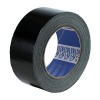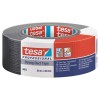Can you cut duct tape with just your hands? Here’s how
American cloth tape, the most versatile and peculiar among adhesive tapes. It is possible to find this kind of tape in any environment, in any context. As much in a plumber’s toolbox, as in military equipment.
It’s in the kitchen drawers of restaurants, for makeshift repairs, in DIY boxes, practically in every home. And it’ even found on space-bound rockets: this is because duct tape has long been standard equipment on all Apollo missions.
In short, duct tape can truly be found anywhere, because of the simple fact that it can be useful, and indeed valuable, in the most diverse of situations. But be careful: is it enough to have a duct tape in your arsenal in order to be properly equipped for any makeshift repairs you might need to carry out?
Or is it better to consider that, without a pair of scissors or without a cutter, double-sided tape is likely to be useless? In short: can duct tape be cut just by hand, or does it need a cutting device?
Can you cut duct tape by hand?
There’s no need for suspense, so let’s just say it outright: yes, duct tape can be cut by hand. And it is not even a difficult operation, just a minimum familiarity with the medium is enough.
Those who are accustomed to using regular PPL or PVC adhesive tape, do not have the instinct to cut tape by hand, as to cut regular double-sided adhesive tape one always needs something sharp, or pointed: a pair of scissors, a knife, a cutter, a cutter, or, in the worst-case scenario, a key or your own teeth.
With cloth tape you won’t need any of this: you just have to tear it. And no need to think that the tear will be “off” or “crooked”: this isn’t paper tape.
The tear will always be straight, because the cloth inside duct tape will not allow for any detachment that isn’t perfectly horizontal, and therefore perpendicular to the length of the roll.
To tear off duct tape by hand, all you need to do is locate the point where you want to cut and pull the edge immediately before that point tightly, using the thumb and index finger of your left hand, and the edge immediately after with the thumb and index finger of your right hand.
At that point, all you need to do is pull one hand inwards and the other outwards, thus forcing the webbed tape to tear.
But why was strong double-sided duct tape designed to be torn by hand?
The origins of American duct tape
The peculiarity of hand-tearing is a direct consequence of its origins. Duct tape was, in fact, developed for the US army during the Second World War, with the precise purpose of being an optimal adhesive to seal ammunition boxes and to carry out other makeshift repairs.
What they wanted was, therefore, not only a very resistant adhesive tape, not only with a high degree of adhesion, but also one easy to use outside laboratories and workshops, on the field, without requiring any other tools.
Moreover, they wished for a tape that was easy and quick to apply, almost instantaneous: because of this, duct tape can simply be torn by hand. All these features, as it has been established, have led to it being used in a wide array of situations: duct tape was used to balance the blades of helicopters, to repair the pipes of a lunar module in one of the Apollo missions, and even to repair a lunar rover.
Some people might think that being “torn” by hand makes the tape less durable. But what is the truth?
Duct tape’s durability
It is necessary to begin this section from a fundamental concept: the forces that are employed on the webbing to cut it by hand are substantially different from those that could break it during actual use.
Consider industrial double-sided tape used to close a particularly heavy box, or industrial double-sided tape used to hold a bundle of tubes together, or tape used to attach an object to a wall. In all cases traction forces having an effect on them will be different from those exercised by the fingers of one hand – inverse and concentrated at a precise point at the edge of the tape.
This is demonstrated by the tests carried out in a lab using machines that allow adhesive tapes to be subjected to maximum breaking strength. The unit of resistance to breakage of fabrics is the Newton: in the case of Extra strong Tesa 4662 webbing, the tensile strength is 30 N/cm, leading to a truly very resistant tape (also characterised by a high adhesive strength of 4.4 N/cm on steel surfaces).







